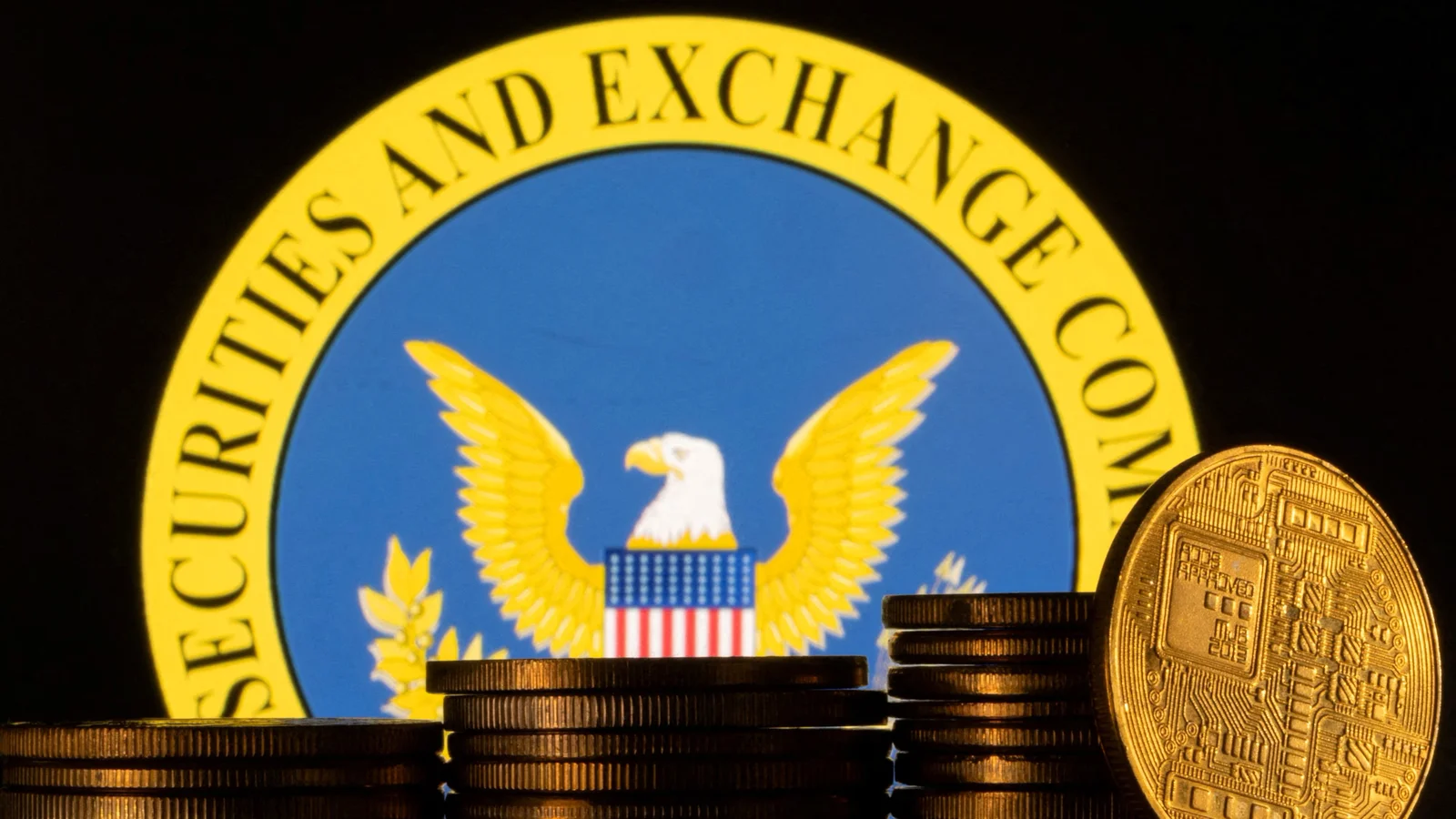News
Altcoin News
Altcoin News
Browse all Altcoin related articles and news. The latest news, analysis, and insights on Altcoin.
Trump Jr.'s Investment Company Will Add DOGE, LTC, SOL, XRP, ETH, and USDC to Its Reserves
Los Angeles-based social media marketing firm Thumzup Media Corporation (TZUP) has decided to expand its cryptocurrency holdings. The company's board of directors has approved the inclusion of leading altcoins such as Dogecoin (DOGE), Litecoin (LTC), Solana (SOL), Ripple (XRP), Ethereum (ETH), and USD Coin (USDC) in its reserves, expanding beyond Bitcoin.Trump Jr. purchased 350,000 sharesThis move comes just days after it was announced that Donald Trump Jr. invested approximately $4 million in Thumzup. According to Bloomberg, Trump Jr. purchased 350,000 Thumzup shares at the recommendation of an investment advisor. While Trump Jr. doesn't have a direct role in the company's management, the timing of the investment is noteworthy. This move by Thumzup has truly garnered attention in the crypto space, especially considering the Trump family's recent growing interest in cryptocurrencies. The company had invested in BitcoinThumzup had been pursuing its Bitcoin accumulation strategy since January. The company's current BTC holdings stand at 19.11 units, worth approximately $2.1 million. This strategy allows for up to 90% of the company's liquid assets to be held in cryptocurrencies. With the new decision, a significant portion of this reserve will now be spread across different cryptocurrencies.CEO Robert Steele said, "We believe a diversified approach to digital assets can increase our financial flexibility as we scale our AdTech platform." The company's core service is centered around an app that allows users to earn cash by sharing specific ads on social media platforms like Instagram. Advertisers can customize their campaigns from their own dashboards, and users receive payments through digital platforms like PayPal.However, Thumzup's financials remain quite weak regardless of its crypto investments. The company generated only $151 in revenue in the first quarter of 2025 and reported a net loss of $2.2 million in the same period. Meanwhile, investors were wary of this aggressive crypto move. The company's shares fell more than 14% on Wednesday following these statements. Table showing Thumzup's losses. Source: Thumzup Thumzup's strategy also reflects the Trump family's general support for crypto initiatives. In March, Eric Trump joined the advisory board of Japan-based Metaplanet, which has converted a significant portion of its reserves into Bitcoin. Trump Media & Technology Group also announced plans to invest in Bitcoin, raising $2.3 billion through Truth Social.
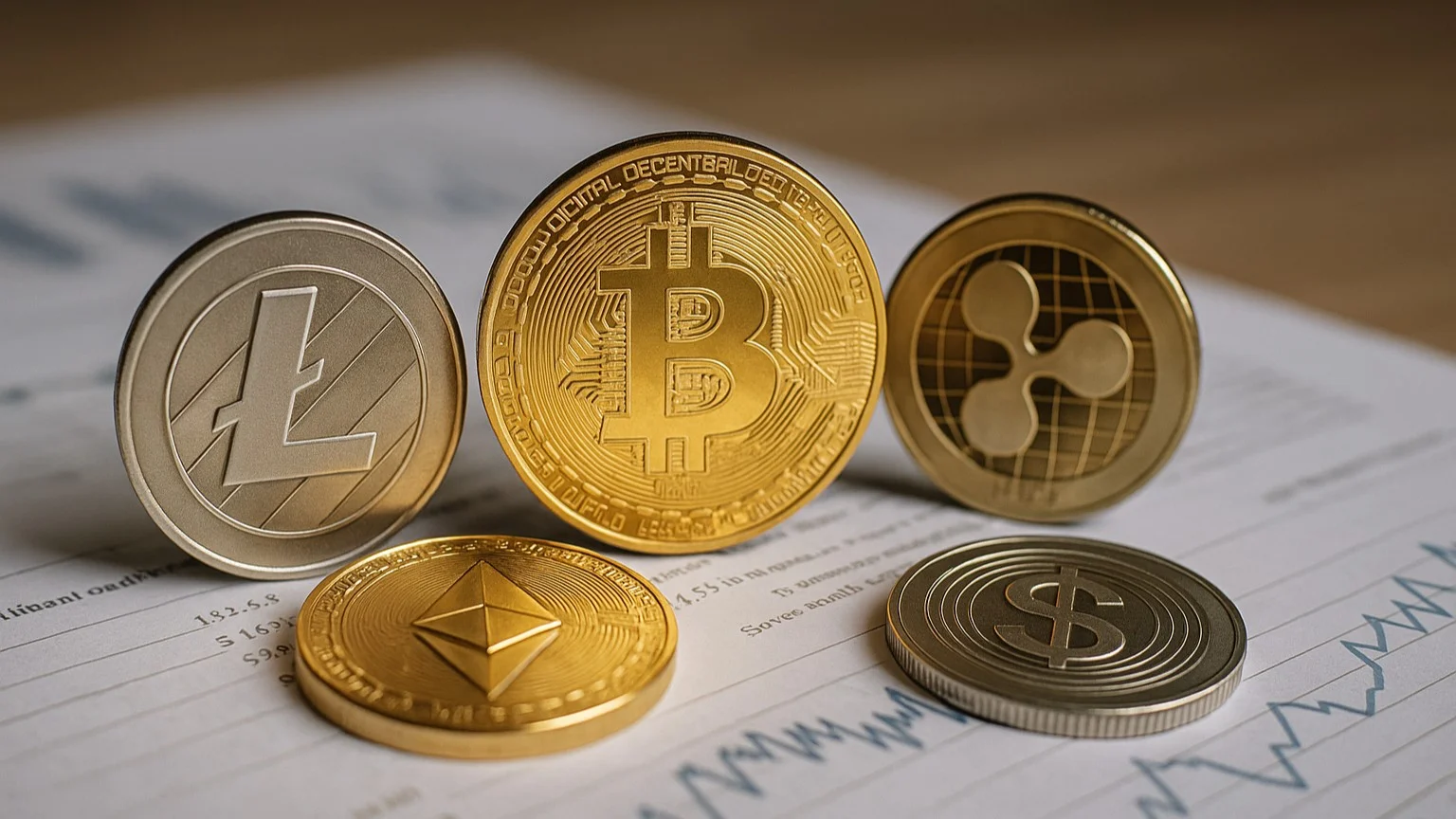
Justin Sun Pledges $100 Million for Trump's Meme Coin
Tron founder Justin Sun, one of the most recognizable figures in the crypto world, has committed to a major investment in the TRUMP meme coin, owned by former US President Donald Trump. In a post on the social media platform X, Sun stated, "We are committing to investing $100 million in TRUMP," stating that this step aims to foster the growth of crypto ecosystems through collaboration.Sun not only made this statement, but also emphasized his belief that this move will expand the crypto space through the collaboration of the TRON and TRUMP communities. Referring to the official @GetTrumpMemes account, he stated that this investment will play a significant role in the future of the Trump-backed meme coin.TRUMP token now migrates to the TRON networkJust two days before this announcement, the Tron DAO announced that the TRUMP meme coin would be launched on the Tron network. This development generated excitement among both Tron and Trump supporters, with the value of the TRUMP token rising 2.7 percent to $8.89 on the same day.As you may recall, Justin Sun is one of the leading investors in the TRUMP token. According to CNBC reports, Sun previously held one of the largest wallets in the field, with approximately $19 million worth of TRUMP tokens. Sun also attended a private gala dinner hosted by Trump earlier in the year. Trump and Sun's relationship deepensThe ties between Justin Sun and Donald Trump are not new; they have only recently strengthened. Immediately after Trump won the November 2024 election, Sun invested $30 million in the Trump-inspired World Liberty Financial project, which also includes his sons as ambassadors. This amount was quickly increased to $75 million, and Sun also began serving as an advisor on the project. In January, World Liberty purchased millions of dollars worth of TRX tokens from the TRON network, which Sun founded.Is the legal process easing?The legal problems Justin Sun is facing in the US are also drawing attention. Last year, the US Securities and Exchange Commission (SEC) filed a lawsuit against Sun and three of his companies for the unregistered distribution of TRX and BTT tokens. However, following the Trump administration's positive approach to crypto, there are signs that the SEC's stance is softening.In a document filed in the Federal Court for the Southern District of New York recently, lawyers for the SEC, Sun, and his companies jointly requested a stay of proceedings. This development is being interpreted as suggesting that Trump's more crypto-friendly approach could give Justin Sun an advantage in resolving his legal issues in the US.
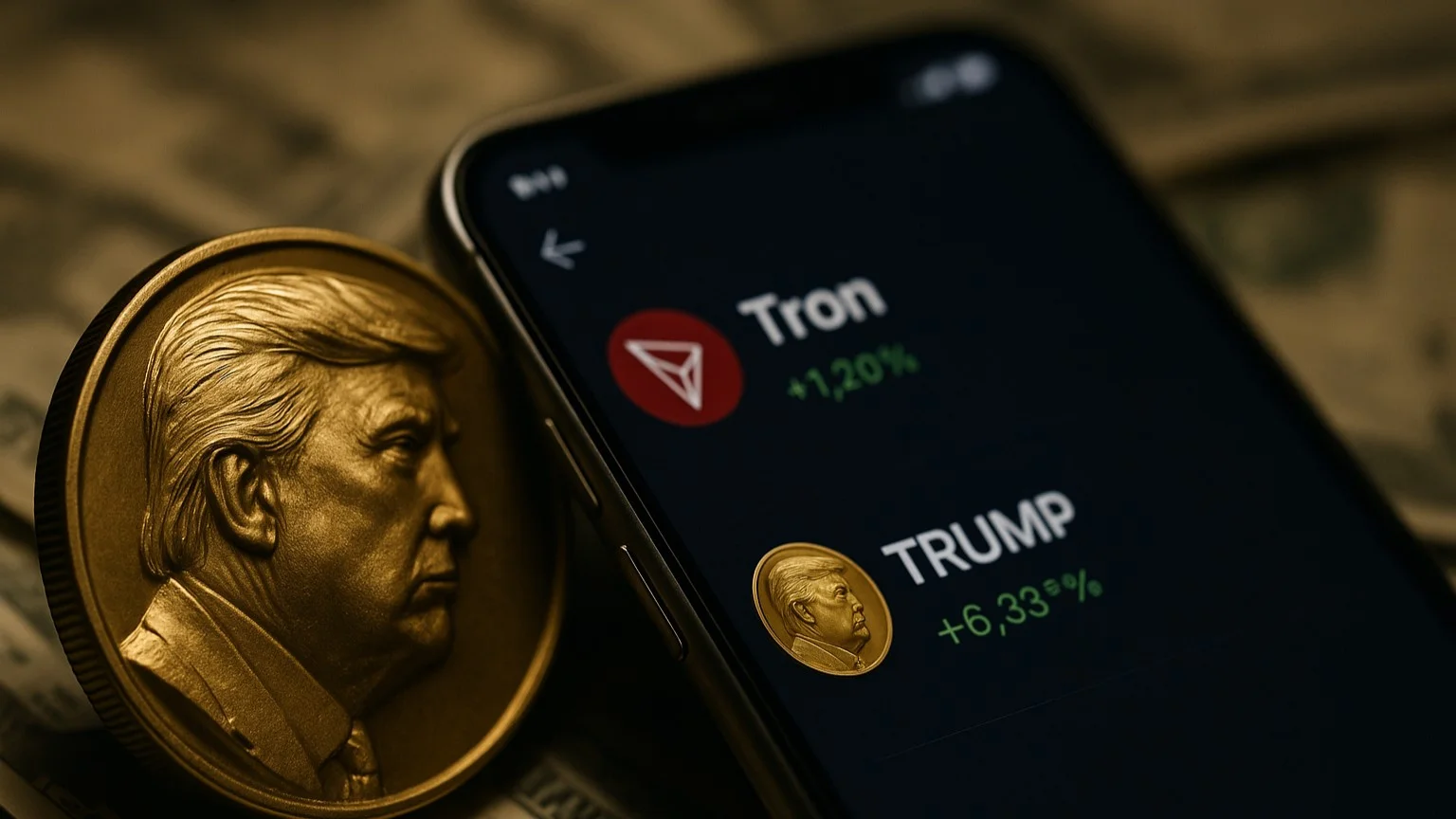
SOL Comment and Price Analysis July 9, 2025
SOL Technical OutlookThere is a clear descending channel pattern on the SOL chart. This pattern, which can be seen on the daily timeframe, is very clear on the 4H timeframe. The support range of $139.90–$146.78 where the upward breakout occurred currently seems to be a critical horizontal zone. Falling Channel Fracture There have been three price tests to the upper boundary of the channel. The fourth test has occurred and the upward breakout, also the target of the falling channel, has occurred and the price is trading above this breakout for the time being. Major levels are $139 and the support level $132, which also coincides with the trend support level. $167.79, $197.80, and $223.09 are major upward targets.These analyses, not offering any kind of investment advice, focus on support and resistance levels considered to offer trading opportunities in the short and medium term according to the market conditions. However, the user is responsible for their own actions and risk management. Moreover, it is highly recommended to use stop loss (SL) during the transactions.

What is Jupiter (JUP)?
In the crypto world, decentralized finance (DeFi) continues to revolutionize the world by allowing users to conduct financial transactions without the need for traditional intermediaries. However, this freedom also brings with it some challenges: fragmented liquidity, volatile prices, and user-unfriendly interfaces. This is where Jupiter (JUP), which runs on the Solana blockchain, comes into play. Jupiter is an advanced aggregator protocol that scans multiple decentralized exchanges (DEX) and offers the best prices to the user. It allows users to easily buy and sell at the most advantageous rates without being exposed to complex DeFi transactions. It brings together many features under one roof, from swap transactions to limit orders, from DCA (dollar cost averaging) strategies to bridging and perpetuals transactions, making DeFi more accessible. However, it would be insufficient to describe Jupiter as just a “DEX aggregator.” The project is building a financial ecosystem that redefines the user experience by leveraging Solana’s low-cost and high-speed infrastructure. Designed for both beginners and experienced traders, it stands out with its user-friendly interface, advanced trading tools, and decentralized governance. Jupiter, which has been growing steadily since its launch in 2021, currently manages more than 50% of the total DEX trading volume on Solana and is a leader in the DeFi space. In this guide, we will cover in detail what Jupiter does, how it works, the role of the JUP token, and the big steps it has taken so far. Let's answer questions such as what is Solana Jupiter, how does Jupiter work?Jupiter Definition and OriginJupiter is a decentralized finance (DeFi) protocol running on the Solana blockchain. By aggregating prices from different decentralized exchanges (DEX) and liquidity pools in one place, it allows users to easily find the best exchange rates. This makes it possible to reach the most advantageous prices without having to check each platform separately.Jupiter's goal is not limited to just offering the best trading rates; it also aims to establish a strong trading infrastructure in Solana's rapidly growing DeFi world. By using liquidity more efficiently and simplifying transaction routes, it makes DeFi transactions easier and more accessible for everyone. Users can now easily reach the best rates without having to check different exchanges one by one. Jupiter homepage. The platform offers a range of services. Source: Jup.ag Jupiter was launched in October 2021. This period coincided with the rapid expansion of the Solana ecosystem and the high interest of users in low-cost, fast solutions. Jupiter was developed in response to this need, as a DEX router using Solana’s fast and low-fee infrastructure. Thanks to Solana’s high-volume transaction-per-second architecture, Jupiter can seamlessly handle large-volume and frequent exchanges. The project’s initial goal was to become Solana’s default trading platform and provide the ecosystem’s most robust trading infrastructure.Jupiter’s launch in 2021 and its goal of leveraging Solana’s fast, low-cost infrastructure took it beyond being just a protocol that runs on Solana. By consolidating the dispersed liquidity on Solana into one place, Jupiter increased user confidence in the platform and increased trading volume. This led to increased adoption of Solana and increased its competitiveness in the DeFi space.Jupiter’s History: Major MilestonesJupiter’s short but eventful history showcases its rise in the Solana ecosystem and its innovative approach to DeFi. Let’s take a look at what happened one by one:2021: Launch and first protocol integrations. Jupiter officially went live on the Solana blockchain in October 2021. The project’s initial goal was to become Solana’s default exchange platform and build the most robust exchange infrastructure. With the launch, integrations were achieved with leading DEXs on Solana, such as Raydium, Orca, and Serum. Thanks to these integrations, Jupiter was able to collect the best prices from different liquidity pools, and the platform’s core functionality was built on this structure.2022: JUP token plans announced. Jupiter announced that it plans to launch the JUP token in 2022. This announcement was the first sign that the project would move towards community participation and decentralized governance. The JUP token was designed as a tool to give the community a say in the future of the platform.2023: Become the largest Solana-based DEX aggregator by volume. Over the course of 2023, Jupiter rose to become the largest and most active DEX aggregator in the Solana ecosystem. During this period, Jupiter became the market leader, single-handedly managing over 50% of the total DEX trading volume on Solana.2024: The Jupiter token airdrop and listing on centralized exchanges began. The highly anticipated first airdrop of the JUP token took place in January 2024. In this large-scale distribution, 1 billion JUP tokens were sent to over 1 million eligible wallets, rewarding early adopters. Following the distribution, JUP was listed on major centralized exchanges such as Bitmart, BingX, CoinDCX, HTX, and Bitrue, thus reaching a wider audience of investors. January 2025: $630 million JUP airdrop. In January 2025, the Solana market was very active, especially after US President Donald Trump announced the Solana-based TRUMP token. Jupiter volume also broke records for this reason. According to DeFiLlama data, Jupiter recorded a volume of $37 billion in the first month of the year. Meanwhile, the Jupiter team announced that they would carry out a $630 million JUP airdrop. Jupiter’s trading volume peaked in January 2025. Source: DeFiLlama January 2025 “Catstanbul”: Jupiter also held its first major conference event, “Catstanbul 2025” in Istanbul on January 25-26. The event announced important product updates, future plans, and new partnerships for the platform. One of the most notable moments was the live burning of 30% of the JUP token supply.June 2025: In June 2025, the Jupiter DEX router decided to temporarily pause its decentralized voting capabilities until the end of 2025.July 2025: As of July 2025, Jupiter continues to grow its influence in the DeFi space. As of June 2025, Jupiter reached a monumental milestone of surpassing $1 trillion in cumulative transaction volume on the Solana blockchain.JUP token future: Jupiter DAO announced plans for two more JUP airdrops in 2025 and 2026.Why Is Jupiter Valuable?Jupiter’s value in the Solana ecosystem goes beyond being just a trading platform. In fact, Jupiter is one of the cornerstones that supports Solana’s growth in the DeFi space. In addition to offering users the best rates, it also brings liquidity under one roof, simplifies the trading experience, and makes next-generation trading tools accessible to everyone. Now, let’s take a look at all the key features that make Jupiter valuable:The most active and powerful DEX aggregator on SolanaJupiter is the most active and dominant DEX router on Solana. The platform single-handedly manages more than 50% of the total DEX trading volume on the network, reaching a total volume of over $1 trillion as of June 2025, cementing its leadership. What does this mean for users? Better prices, lower slippage, and efficient transactions at all times. Jupiter’s intelligent routing algorithms minimize price change even on large transactions. Additionally, this trading volume and user interest creates a strong network effect: as more people use the platform, liquidity increases, leading to better rates and more users. DEXs on Solana. Source: Solana Nation Easy integration with popular Solana walletsJupiter seamlessly integrates with the most popular wallets in the Solana ecosystem, such as Phantom, Backpack, and Solflare. This allows users to easily connect their wallets and make transactions quickly. In addition, thanks to the APIs provided by Jupiter, different dApps, wallets, and projects can also benefit from the platform's infrastructure.Automatic comparison to find the best priceOne of Jupiter's strengths is its advanced routing engine. This system instantly scans many DEXs on Solana, such as Raydium, Orca, and Serum, and finds the best price on whichever platform. Moreover, it can provide more efficient results by splitting swaps into multiple routes to reduce the slippage effect in large transactions. Thus, users always enjoy trading at the best price without having to check different exchanges one by one.Intuitive interface and low transaction feesJupiter has a very user-friendly interface for both beginners and experienced investors. By simplifying the complex structure of DeFi, it makes it easier for more people to step into the field.By leveraging Solana’s low transaction fees, Jupiter offers a cost advantage of up to 40% compared to Ethereum-based DEXs, a big plus for frequent traders. Jupiter leads to other DEXs. Source: Shoal Research In addition, the platform is not limited to simple swaps. Advanced tools such as limit orders, DCA (dollar cost averaging) strategies, and perpetual futures are also offered in a single interface. In other words, users can access everything they need through Jupiter without switching between different platforms.Jupiter's basic features and working mechanismJupiter has become one of the most comprehensive DeFi platforms on Solana. It no longer just swaps tokens; it offers a fully-equipped infrastructure where users can implement different trading strategies, make cross-chain transactions, and even access advanced financial instruments such as interest-free loans. Of course, the swap feature is at the heart of the platform. Thanks to this system that collects liquidity from different DEXs on Solana, users can reach the best price rates and minimum slippage. Liquidity from platforms such as Raydium, Orca, and Serum allows users to make more advantageous transactions. In addition, during swap transactions, transactions can be personalized with settings such as routing preferences, which gives users more control.Jupiter also brings the experience of traditional exchanges to the DeFi space by offering limit orders in a decentralized environment. Users who want to buy or sell at a certain price level can place their orders without having to constantly monitor the market. The system automatically performs the transaction when the target price is reached by monitoring on-chain prices. If there is not enough liquidity, it even divides the transaction into parts and completes it more smoothly. Jupiter leads to other DEXs. Source: Shoal Research Jupiter is also quite useful for users who adopt the dollar cost averaging (DCA) strategy. It is possible to make automatic buy/sell transactions by spreading a certain amount over time. This feature is especially valuable for those who want to reduce their risk against fluctuations in crypto markets. For example, a user can spread their investment over time by buying a certain amount of SOL every day, thus meeting the ups and downs of the market more balanced.Another important feature offered by the platform is bridge support. Users can quickly and securely transfer tokens between different blockchains. By integrating various bridge solutions such as Mayan Finance, Debridge and Wormhole, Jupiter automatically determines the most efficient and cost-effective transfer route. This simplifies inter-chain interactions.Perpetuals, offered for more advanced investors, are also another notable feature of Jupiter. This system, which runs on Solana, provides advanced trading options to professional traders by offering up to 100x leverage. At the same time, the platform also hosts its own liquidity pool (JLP Pool). Users provide liquidity by locking their tokens in this pool, and in return, they earn income from transaction fees. This both supports the platform's trading volume and offers the user a passive income opportunity.Who is the Founder of Jupiter?The team behind Jupiter and the decentralized governance approach it adopts are one of the most important elements that shape the character of the project. The platform was launched by an anonymous person known by the nickname "Meow" and an anonymous team. In the crypto world, anonymous teams are seen in many projects, and this approach is generally considered compatible with the philosophy of decentralization. In the case of Jupiter, although the team is not directly introduced, the technical achievements they have demonstrated and the fact that they have turned the project into the largest DEX router in Solana show that they have serious expertise. In addition, despite not revealing who they are, they have managed to establish a trust-based relationship with the community thanks to transparent airdrop policies, organized events (e.g. Catstanbul 2025) and a clear roadmap.Jupiter's development process is completely community-oriented. Jupiter DAO, the decentralized autonomous organization, plays a very important role in this process. The platform's loyal community calls themselves "Space Catdets".This entire structure is built on a strong decentralized governance principle. The JUP token is also positioned as a tool that provides a say in governance. Token holders can vote on many issues, from protocol upgrades to new project launches, from grant distributions to token emission programs, through the Jupiter DAO. However, as we mentioned before, Jupiter DEX decided in June 2025 to temporarily pause the DAO’s voting capabilities until the end of 2025.Frequently Asked Questions (FAQ)In this section, we will answer the most frequently asked questions users have about Jupiter and the JUP token.What is Jupiter and what does it do?: Jupiter is a decentralized exchange (DEX) aggregator running on the Solana blockchain. Its main purpose is to provide users with the most suitable token swap rates from different DEXs in the Solana ecosystem.What is JUP coin, when was it distributed?: JUP is the native governance token of the Jupiter protocol. Token holders can vote on decisions regarding the future of the platform.1 The first JUP airdrop took place in January 2024 and 1 billion tokens were distributed. On January 9, 2025, the second airdrop (Jupuary) distributed another 700 million JUP, and there are plans for 2026Which exchanges does Jupiter scan?: Jupiter aggregates liquidity from many Solana-based decentralized exchanges (DEX) and automated market makers (AMM). These include leading Solana projects such as Raydium, Orca, and Serum. It has become a major decentralized exchange comparison tool because it supports many platforms.Why is Jupiter preferred in Solana?: Jupiter takes full advantage of Solana's high speed and low transaction fees. It is preferred due to its ability to automatically find the best price across multiple DEXs, minimize slippage, and offer advanced tools such as limit orders and DCA in a single interface. It reinforces its leading position by managing more than 50% of all DEX trading volume on Solana.What is Jupiter’s level of decentralization?: Jupiter has adopted a community-driven and decentralized governance model through the JUP governance token. Token holders can vote on important decisions through the DAO. However, in June 2025, it was decided to temporarily pause the DAO vote until the end of 2025.Is it safe to swap with Jupiter? The answer to the question of whether it is safe to swap with Jupiter is generally yes. The platform is non-custodial, meaning it never holds your funds; transactions occur directly from your wallet. Its code is open source and undergoes regular security audits. However, it is important to always make sure to use official links and be careful of phishing scams. Every investor should invest according to their own research.To follow developments on Jupiter and the JUP token closely, check out our JR Crypto content series.

Ripple Picks BNY Mellon for RLUSD as Garlinghouse Heads to Senate
As the influence of institutional players in the cryptocurrency market increases, a new step from Ripple could change the balance in the sector. Bank of New York Mellon (BNY Mellon), the oldest bank in the US, has been chosen as the primary custodian of the reserve assets of Ripple's US dollar-backed stablecoin RLUSD.Ripple chooses BNY MellonRipple officially joined the US-based stablecoin race by launching RLUSD in December 2024. In this context, Ripple applied for a national bank license in the US and a master account from the Federal Reserve. BNY Mellon's role in the custody of RLUSD reserves not only provides Ripple with institutional credibility, but also offers significant advantages in meeting regulatory requirements. Emily Portney, the bank's global asset services manager, said, “As BNY, we are committed to providing end-to-end differentiated solutions in the crypto asset ecosystem. Our collaboration with Ripple reflects our belief in the future of finance.” The Ripple-BNY Mellon partnership is part of a period dubbed the “summer of stablecoins” by CNBC. During this period, major companies such as Amazon, Walmart, Apple, and Uber are reportedly working on their own stablecoin projects. The Trump administration’s crypto-friendly policies and new regulatory frameworks passed by Congress, especially the GENIUS Act for stablecoins backed by the US dollar, are further fueling this interest.Stablecoins, as cryptocurrencies pegged to fiat currencies, combine the speed and efficiency of blockchain with price stability. In these aspects, they offer attractive payment solutions for both consumers and institutions. The low-cost and fast transfer opportunities they offer, especially in cross-border payments, are driving institutional players towards stablecoin solutions.Ripple’s US strategy is strengtheningFounded 13 years ago, Ripple has been mostly known for its XRP token and corporate payment network to date. However, with the launch of RLUSD, the company has made clear its strategy to gain a deeper foothold in the US market. The national bank license and Fed account applications reveal Ripple’s goal of integrating directly into the central bank infrastructure.BNY Mellon, on the other hand, began its activities in the crypto sector in 2021. The bank, which provides institutional services for Bitcoin and other digital assets, has once again attracted attention in the digital asset ecosystem with this new partnership with Ripple.Brad Garlinghouse to attend an important hearing in the USIn parallel with these developments, Ripple CEO Brad Garlinghouse is also heading to Capitol Hill to testify to the US Senate Banking Committee on July 9, 2025. The session titled “From Wall Street to Web3: Building Digital Asset Markets Tomorrow” will discuss technopolitical regulations and the future of the crypto sector.Garlinghouse emphasizes that innovation can be accelerated with clear regulatory frameworks. Emphasizing the importance of bills such as the GENIUS Act (stablecoin regulations) and the CLARITY Act (SEC–CFTC authority line), the CEO states that these laws will bring “a smart market order that will protect investors and support innovation.”
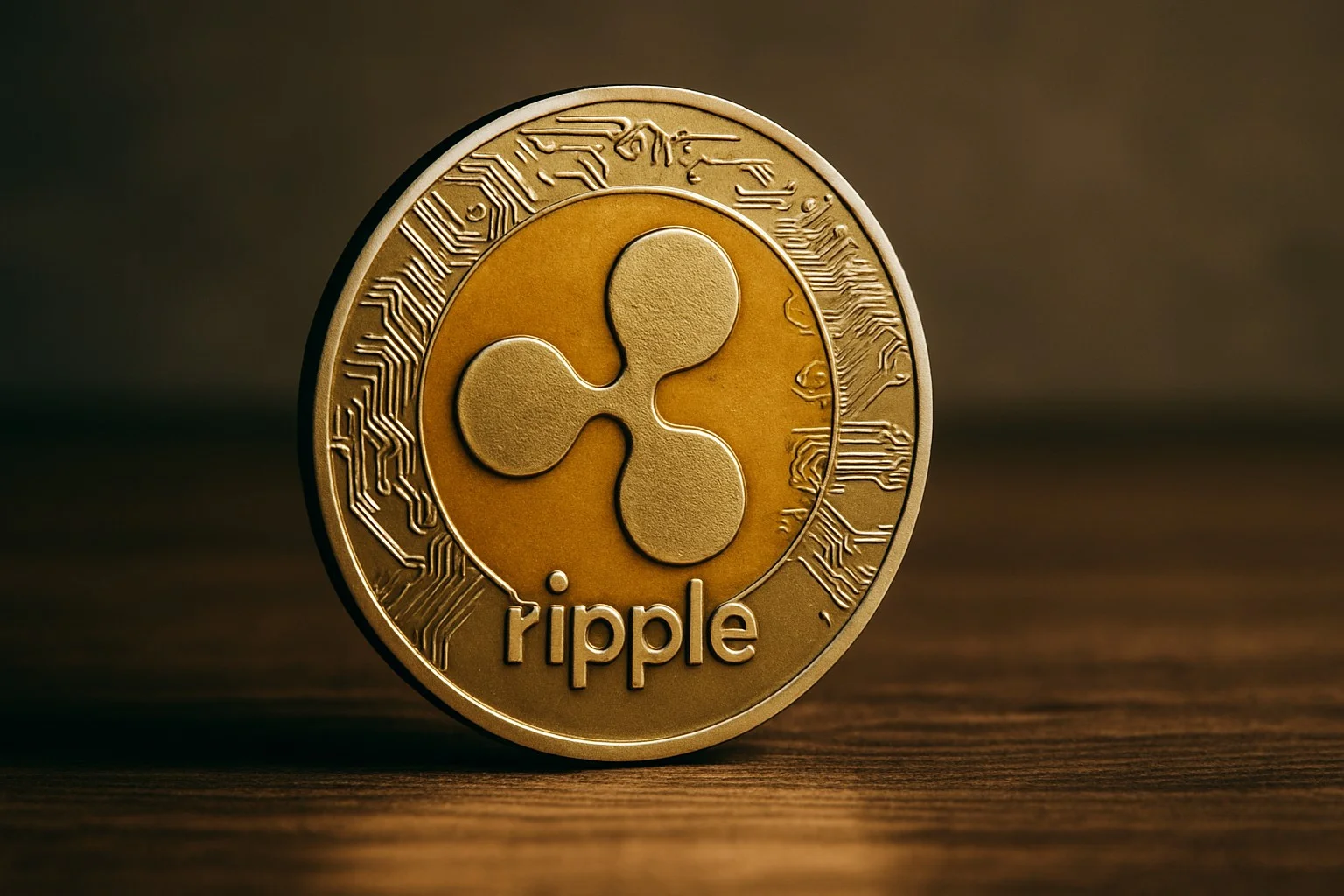
Emirates Begins Flights with Cryptocurrency
Emirates, one of the world's leading airlines, is preparing to take a strong step into the world of cryptocurrencies. The company announced that it will offer its customers the opportunity to pay for flights and services with cryptocurrencies as of 2025. This important development was made official with the Memorandum of Understanding (MoU) signed between Emirates and global crypto platform Crypto.com on July 9.Emirates will start accepting cryptocurrency paymentsAs part of the agreement, it is planned to integrate Crypto.com Pay, Crypto.com's payment solution, into Emirates' global payment infrastructure. In this way, millions of Emirates customers will be able to carry out many transactions, from flight tickets to additional services, with Bitcoin, Ethereum and other cryptocurrencies. Adnan Kazim, Emirates' Vice President of Commercial Operations, stated that this step is a strategic decision to both modernize the customer experience and catch up with innovations in digital finance. Kazim said, “This strategic move reflects our goal of offering our customers more flexibility and payment options, in line with Dubai's vision of being a pioneer in financial innovation.”Dubai has been on its way to becoming the “crypto capital of the world” with the steps it has taken in the field of crypto and blockchain in recent years. This vision, supported by both legal regulations and private sector collaborations, has also been reinforced with the Emirates-Crypto.com partnership. Although no details were given on the subject, according to the statements made, this partnership will not only diversify payment options; it will also encourage the adoption of cryptocurrencies with extensive marketing campaigns.Crypto.com President and COO Eric Anziani emphasized in his statement that this MoU signed with Emirates is an important milestone for daily crypto usage. “Working with a globally influential partner like Emirates will give great momentum to the cryptocurrency sector. Thanks to this integration, both Crypto.com and Emirates will be able to offer truly innovative financial solutions to their customers,” he said.Emirates, which currently serves 148 airports in 80 countries, is preparing to become one of the pioneers in the travel and aviation sector that accepts cryptocurrency payments with this move. Crypto integration, which we have previously seen in sectors such as real estate and telecommunications, is now spreading to traditional sectors such as airline transportation.

POL Makes a Big Splash Ahead of Critical Update on Polygon
Polygon, a leading name in the blockchain ecosystem, is preparing for a significant milestone with the Heimdall v2 upgrade, which will take place tomorrow, July 10th. This upgrade is described as the most complex hard fork since the Polygon PoS network launched in 2020 and promises revolutionary improvements in network performance. In anticipation of the upgrade, Polygon's native token, POL, has attracted attention, gaining over 10% in value in the last 24 hours.Heimdall v2: Transaction finality will accelerateThe primary goals of the Heimdall v2 upgrade include reducing the network's transaction finality time (finality) to approximately five seconds and eliminating technical debt from the 2018-2019 period. Polygon Foundation CEO Sandeep Nailwal stated on X (formerly Twitter) that this upgrade is the "most technically complex hard fork" Polygon PoS has seen since its inception in 2020. The reduced finality time means much faster and more secure transaction confirmations for users. This will significantly improve the user experience, particularly in areas like DeFi (Decentralized Finance) and GameFi (Game Finance).POL token surgesDriven by news of the Heimdall v2 upgrade, the POL token price increased by 10 percent in the last 24 hours, trading at $0.20, reaching a market capitalization of $1.8 billion. According to Polygon's previous statements, script execution time on the mainnet (excluding any troubleshooting or preparation) is expected to last approximately 30 minutes. This brief outage is seen as a significant step for the long-term health and performance of the network. Nailwal made an important call to validators ahead of the upgrade, stating that most have already upgraded, but that those who haven't should test it early, spread the word, and contact them if they encounter any issues. Validators' preparation for a smooth transition is critical to the success of the upgrade.Among the innovations that Heimdall v2 will bring are technical details such as the use of a fork for the Cosmos SDK (based on v0.50.13) and CometBFT (based on v0.38.17). These changes aim to modernize the consensus layer underlying Polygon PoS, improving the network's efficiency and scalability. Furthermore, the upgrade is expected to reduce the network's block time from 5-6 seconds to approximately 2 seconds, and the finality time from 90 seconds to 4-6 seconds.

What is Jito (JTO)?
Solana has become a shining star in the crypto world with its fast transactions, low costs, and vibrant developer community. One of the prominent projects in this vibrant ecosystem is Jito (JTO). Going beyond simply being a liquid staking protocol, Jito focuses on the MEV (Maximum Extractable Value) issue within Solana and aims to provide a more equitable structure. This way, it becomes a crucial infrastructure layer that benefits not only individual investors but also the entire Solana network.In this guide, we will cover a wide range of topics, from what Jito does and how it works to concepts like liquid staking and MEV, the protocol's evolution and future potential. If you're interested in earning passive income through Solana or participating in the ecosystem's governance processes, this article is for you.Jito's Definition and OriginJito is an innovative protocol running on the Solana network, offering both liquid staking and MEV infrastructure. In the blockchain world, Maximum Extractable Value (MEV) presents both an opportunity and a controversial topic. Validators can manipulate the order of transactions when adding them to blocks. This allows them to generate additional revenue through techniques such as arbitrage opportunities, liquidations, and even "sandwich attacks." However, this could lead to increased spam and network congestion, especially on networks with high transaction volumes like Solana.Jito developed a custom MEV infrastructure to address this issue. At the heart of this system is the Jito-Solana validator client, an enhanced version of Solana Labs' client. This client offers additional functionality to process MEV revenues efficiently and transparently.This system allows users to stake their SOL tokens while maintaining their liquidity. In traditional staking systems, tokens are locked for a specific period and become unusable during this period. Jito eliminates this limitation, allowing staked assets to be used as collateral in the DeFi ecosystem or used for additional earning opportunities. Jito's liquid staking token, jitoSOL, is at the core of this structure. When users stake their SOL through Jito, they receive jitoSOL in return. This token automatically accumulates not only traditional staking rewards but also MEV income. This allows jitoSOL's value to continuously increase against SOL over time. This means that while the amount of jitoSOL in your wallet remains constant, the amount of SOL represented by each jitoSOL grows over time. This mechanism stands out as one of the key differences between Jito and other liquid staking solutions and provides a clear answer to the question, "What is jitoSOL?" Jito: How Does the System Work? Source: Docs.Jito Another key goal of Jito is to improve the performance of validators on the Solana network and transparently manage MEV opportunities. MEV represents the maximum profit that block producers, or validators, can achieve by queuing or including transactions. Instead of limiting this profit solely to validators, Jito distributes it equitably to stakers, both rewarding users and contributing to network health. It also helps prevent congestion in Solana by reducing spam transactions. In this respect, Jito is considered a protocol that increases efficiency within the Solana ecosystem.Jito was developed by Jito Labs in 2021 and has since undergone a robust technological infrastructure and product development process. As is well known, many crypto projects prefer to quickly issue tokens and enter the market, but this is not the case for Jito. Jito was founded in 2021 and only launched the JTO token at the end of 2023. This means the project has taken time to mature. The governance model was launched with the introduction of the JTO token at the end of 2023.Jito's distribution of MEV rewards to stakers offers a value proposition beyond traditional staking. This increases both user engagement and liquidity. This system is highly attractive not only to those seeking passive income but also to users seeking a more active presence in the DeFi ecosystem. Jito's "double-tiered yield" model distinguishes it from its competitors. This directly impacts Jito's Total Value Locked (TVL) and market share.Jito's History: Key MilestonesJito Labs was founded in 2021 by Lucas Bruder and Zanyar Sherwani. The project was supported by strong financial support from the outset. In December 2021, it received a $2.1 million seed investment, and in August 2022, it raised a $10 million Series A investment from leading cryptocurrency companies such as Multicoin Capital, Framework Ventures, and Alameda Research. Jito's liquid staking solution, Solana, saw rapid adoption thanks to its popularity. By September of that year, the Jito network reached 200 validators, accounting for over 15% of staked SOL.By February 2023, Jito's MEV infrastructure was actively used by major validators like Figment. The launch of both the technical infrastructure (MEV) and the governance model (JTO token) during the same period also attracted attention. This approach allows users to not only gain technical advantages but also have a say in the protocol's future by participating in governance processes.The JTO token was officially launched on December 7, 2023. This launch was preceded by a comprehensive "Jito Airdrop" campaign that ended on November 25th. 10% of the total supply, or 100 million JTO, was distributed to the community. Beneficiaries of the airdrop included jitoSOL holders, those using jitoSOL in DeFi protocols, and those operating Jito's MEV client.By 2025, the use of jitoSOL as collateral in DeFi protocols had become increasingly widespread. In 2024, the Solana DeFi ecosystem recovered, reaching a TVL of $3.8 billion, and jitoSOL contributed significantly to this growth. On July 1, 2025, the Jito Foundation formed a significant strategic partnership with Anchorage Digital. Anchorage, the first federally authorized crypto bank in the US, began supporting the storage, printing, and redemption of jitoSOL. This marked a significant step forward in institutional adoption for jitoSOL.Why Is Jito Valuable?Jito's value is clearly evident in its innovative features and contributions to the Solana ecosystem. Below, we've summarized the key elements that make Jito valuable:Double-Tiered Yields and LiquidityJito offers a dual-tiered earnings model, providing users with MEV returns in addition to traditional staking rewards. This significantly increases the passive income potential of staked SOL. Furthermore, through jitoSOL, it maintains the liquidity of staked SOL. This is a critical advantage for users seeking a "staking + liquidity solution," as they can use their assets as collateral in DeFi protocols or invest them for additional returns, rather than locking them up. This flexibility makes Jito a central player in the Solana DeFi ecosystem and provides one of the key answers to the question, "What is the use of JTO coin?"Decentralized and Transparent MEV ManagementJito is taking a leading role in transforming MEV management within Solana to a more decentralized, transparent, and participatory model. Thanks to the Block Engine and Bundle systems it developed, MEV opportunities are captured through auctions, and these revenues are distributed fairly to stakers. It also reduces spam and congestion on the network. This mechanism is a key innovation that distinguishes Jito from the "Solana MEV protocol." Let's examine the three main components of Jito's MEV system as follows:Bundles: MEV searchers send transactions to Jito in packets, which must be executed on an all-or-nothing basis. By adding a tip to the packets, they can prioritize their transactions. This method increases transaction efficiency on the network and reduces congestion.Block Engine: This system creates an off-chain auction space between MEV searchers and validators. Each packet combination is simulated, and the highest-valued ones are selected and included in the next block. This allows for more efficient use of Solana's block space and prevents malicious MEV methods. Relayer: This component reduces the burden on validators by verifying and filtering transactions on an independent server. It then forwards the verified transactions to Block Engine and the validators.One of the most important aspects of this system is validator reward sharing. Jito shares the revenue generated from MEV equitably not only with validators but also with users who stake them. This incentivizes validators for performance, and stakers receive a higher return on their investments.Furthermore, Jito Labs recently temporarily suspended its mempool services to prevent sandwich attacks. While this decision resulted in some short-term revenue loss, it was offset by a focus on the network's long-term health.JTO token features and governanceJTO token is the primary tool that provides governance in the Jito protocol. Holders of the “JTO governance token” can participate in decision-making processes on important issues such as protocol parameters, fee structure, treasury usage, and validator selection. JTO token is the native governance token of Jito Network and plays an important role in shaping the future of the platform. The answer to questions such as “What is Jito token?” and “What is JTO coin used for?” is hidden in the decision-making powers that this token offers to the community. JTO holders can have a say in critical decisions on the protocol through the Jito DAO (Decentralized Autonomous Organization). These decisions include:Protocol updates: Voting on changes and improvements to Jito’s infrastructure.Fee structure adjustments: Determining the fee rates on the JitoSOL staking pool and (re)staking network.Treasury management: Providing guidance on how the JTO treasury held by the DAO and the fees obtained from JitoSOL will be used.Delegation strategies: Making decisions about how StakeNet programs will operate and which validators will be prioritized.Protocol parameters: Optimizing other technical settings that affect the overall performance of the network. Latest recommendations on Jito. Source: Gov.Jito The total supply of JTO is set at 1 billion tokens. This supply is distributed evenly among different stakeholders:Community Growth: 34.3%Ecosystem Development: 25%Core Contributors: 24.5%Investors: 16.2%Airdrop: 10% (100 million JTO) Source: Jito The airdrop, which was held towards the end of 2023, was distributed through a points system that ended on November 25. Users who contributed to the growth of the network, such as jitoSOL holders, those using jitoSOL in DeFi protocols, and those operating the Jito-Solana MEV client, benefited from this distribution. The tokens allocated to investors and core contributors were subject to a vesting program to incentivize long-term commitment. These tokens are released gradually over a 3-year period after a 1-year lockup period. Meanwhile, several transaction pools, including JTO/SOL, are active in many Solana-based projects:ProjectPool SplitRaydiumJTO/SOLRaydiumJTO/SOLOrcaJTO/USDCOrcaJTO/USDCKaminoJitoSOL/JTOKaminoJitoSOL/JTOKaminoJitoSOL/SOLKaminoJitoSOL/JUPMeteoraJitoSOL/JUPLeading position in the Solana ecosystem with MEVJito stands out as one of the largest liquid staking protocols on Solana. Together with Marinade Finance, it holds a significant share of the market. In particular, jitoSOL has become one of the most liquid LSTs in the Solana ecosystem. As of February 2025, it has become the largest LST on Solana, reaching approximately $3.2 billion in TVL (Total Locked Value), an increase of 129% on an annual basis. In other words, Jito has a strong position in the “Solana liquid staking” market.Jito staking system and jitoSOLJito’s staking system offers SOL holders in the Solana ecosystem both the opportunity to earn passive income and to evaluate their assets without losing liquidity. Thus, it is one of the developments that provide Jito’s value. The system is very user-friendly: You deposit your SOL tokens into Jito’s staking pool, and in return, you receive a liquid staking token called jitoSOL. The most important feature of jitoSOL is that its value is fed by two different reward sources:Solana staking rewards: Classic staking income distributed to validators.MEV returns: Earnings from arbitrage, liquidation or “sandwich attacks” that occur during block production.Jito collects these MEV opportunities and distributes the income fairly to jitoSOL holders. In this way, the value of jitoSOL constantly increases over time relative to SOL. In other words, the amount of jitoSOL in your wallet may remain constant; however, each jitoSOL token starts to represent more SOL over time. Users can unwind their jitoSOL at any time and get back more SOL than they initially invested. This allows jitoSOL to work as a compounding investment, making it very attractive for long-term investors. JitoSOL staking screen. Source: Jito Who is the Founder of Jito?Jito was developed by Jito Labs, founded in 2021 by Lucas Bruder and Zanyar Sherwani. These two names are the key figures who created Jito's initial vision and laid the technical foundation of the project. Jito Labs' headquarters is located in Arlington, Virginia, USA. The team consists of developers who are experts in Solana infrastructure and specialize in staking and MEV. Zanyar Sherwani's leadership approach and approach to motivating teams in particular play an important role in Jito Labs' success story.The success of a blockchain project is often hidden in the team behind it. Jito Labs' founders and technical staff have deep knowledge in complex areas such as Solana, MEV, and staking.Jito has been developed as an open source project since the beginning. This also allows developers from all over the world to contribute. The Jito-Solana validator client is openly accessible on GitHub. Open source and DAO-based governance make Jito both more resilient and flexible over time. While closed-source projects often rely on the vision of a single team, community-driven projects like Jito can grow much faster by leveraging collective intelligence and global contributions.Frequently Asked Questions (FAQ)Here are some frequently asked questions and answers about Jito:What is Jito and how does it work?: Jito is a liquid staking and MEV infrastructure protocol running on the Solana network. When users stake their SOL tokens to Jito, they receive jitoSOL in return. jitoSOL accumulates not only the classic staking rewards but also additional revenues from Jito’s MEV system. Jito captures these MEV opportunities through a transparent auction system between validators and seekers, and distributes the resulting profits fairly to the stakers. Thus, users can both stake without losing their liquidity and earn extra income.What is jitoSOL, how is it obtained?: jitoSOL is Jito Network's liquid staking token. Users obtain jitoSOL by staking Solana's native token, SOL, on the Jito platform. This token represents the staked SOL and automatically accumulates both staking rewards and MEV income. In this way, the value of jitoSOL increases against SOL over time. Users can not only hold their jitoSOL; they can also use it as collateral in DeFi protocols or add it to liquidity pools to benefit from additional return opportunities.What is the JTO token for?: JTO token is Jito Network's native governance token. JTO holders have the right to vote on decisions that will shape the future of the protocol through the Jito DAO. These decisions include determining the staking pool fees, treasury management, delegation strategies, and technical updates to the protocol. JTO is designed to ensure that Jito develops in a community-focused manner. Users can contribute to the ecosystem not only as investors but also as active decision-makers. What is the difference between Jito and other staking protocols on Solana?: The main difference that distinguishes Jito from other Solana staking protocols is that it focuses on MEV (Maximum Extractable Value) optimization in addition to liquid staking service. Jito efficiently captures MEV opportunities and distributes these additional incomes fairly to stakers thanks to its specially developed MEV infrastructure, namely the Jito-Solana client, Block Engine, and Bundles. Other major protocols such as Marinade Finance also offer liquid staking services; however, Jito’s MEV-centric structure and approach to sharing this income with the community gives the project a unique competitive advantage. This difference clearly reveals Jito's position, especially in comparisons such as "Jito vs. Marinade".What is the feature of Jito's MEV system?: Jito's MEV system was developed to manage MEV transactions on the Solana network in a more transparent, fair and efficient way. The Block Engine at the heart of this system allows MEV seekers to offer transaction bundles to validators via an auction method. Validators choose the most profitable transaction bundles for themselves, and the resulting MEV revenues are shared fairly between validators and users who stake them. This structure not only increases earnings, but also reduces network congestion and protects users from malicious MEV practices.How to get JTO, on which network does it work?: JTO token is a cryptocurrency that runs on the Solana blockchain. Users who want to buy JTO can choose popular crypto exchanges such as Binance, Coinbase, Kraken or CEX.IO. These platforms usually support various payment methods such as credit card, bank transfer or e-wallet. Purchased JTO tokens can be held directly in the exchange wallet, or transferred to a Solana-compatible non-custodial wallet (e.g. Trust Wallet) for greater control and securityFor those who want to earn passive income and participate in governance in the Solana ecosystem, comprehensive content about Jito awaits you at JR Kripto.

UNI Comments and Price Analysis July 9, 2025
UNI Technical Analysis Rising Channel Structure Looking at the UNI daily chart, we see that an ascending channel pattern has been forming. Resistance zone $7.56–$7.83 at the middle boundary of this formation seems very strong. This price zone being mentioned has worked as resistance many times before and the price has been rejected from here. UNI is now at the same price level again. If broken above, the price has the potential to trigger a great rise. It is highly possible to see a movement to the upper trend zone around $9 if the level $7.83 is passed. In case the price gets rejected from this resistance zone again, it may retreat to the first support level $6.88 and then to the trend support around $6.30 in the lower zone.These analyses, not offering any kind of investment advice, focus on support and resistance levels considered to offer trading opportunities in the short and medium term according to the market conditions. However, the user is responsible for their own actions and risk management. Moreover, it is highly recommended to use stop loss (SL) during the transactions.
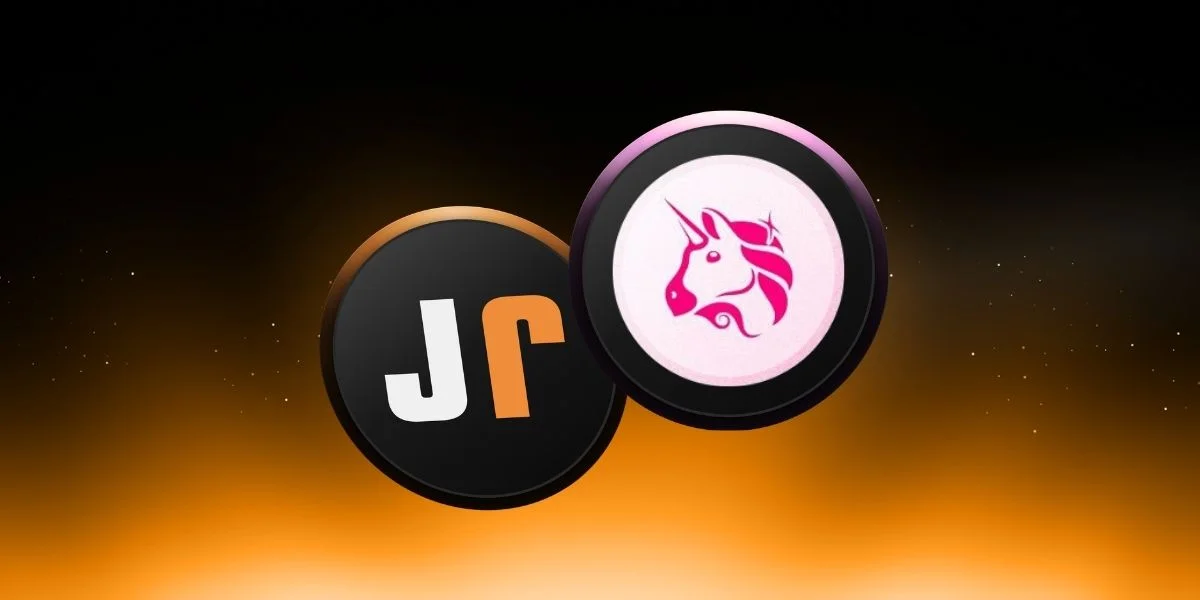
Three Companies Take Action: Bitcoin, Solana, and Ethereum Race Heats Up
Various companies continue to contribute to the cryptocurrency investment trend of 2025. In particular, companies such as KULR Technology Group, Upexi and SharpLink Gaming have begun to adopt leading cryptocurrencies such as Bitcoin, Solana and Ethereum as strategic investment tools in corporate treasury management. Here are the latest moves by these companies...KULR Technology takes a new step with Bitcoin-based loanKULR Technology Group, which offers thermal management solutions and develops security-focused systems especially for lithium-ion batteries, announced that it has provided a $20 million loan facility through Coinbase Credit. This loan will be used to support the company's Bitcoin accumulation strategy and a portion of its existing BTC assets will be shown as collateral.KULR CEO Michael Mo stated that this agreement provides an undiluted capital source for the company and that they have taken an important step towards diversifying their financial resources in order to achieve their long-term growth goals. KULR currently owns 920 BTC and purchased these assets at an average of $98,760. This means that the BTCs acquired at a total cost of approximately $91 million have reached approximately $100 million at current prices, providing a paper profit of approximately $9 million.Upexi, focused on Solana, expands its treasury strategyUpexi, which has placed Solana at the center of its corporate treasury, increased the amount of SOL it holds to 735,692 as of the end of June. This means an increase of 8.2% compared to the previous month. Considering that the SOL price is around $151, Upexi's SOL assets are worth approximately $111 million.Upexi CEO Allan Marshall stated that the company acquired options traded on Nasdaq in June, announced its intention to tokenize its stocks, and joined Webull's Corporate Connect platform. It also announced that they earned an 8% return on their existing SOL assets.SharpLink Gaming's Ethereum moveSports betting company SharpLink Gaming, on the other hand, draws attention with its Ethereum-focused strategy. The company has purchased 7,689 ETH between June 28 and July 4, bringing its total Ethereum holdings to 205,634 ETH. The total value of these ETHs exceeds $533 million. The company has directed all of its ETH assets to staking and retaking transactions, and has thus far won 322 ETH rewards worth approximately $848,000. In addition, SharpLink recently sold 5.4 million shares, generating $64 million in revenue, and announced that it will use most of this revenue for Ethereum purchases. In other words, the company has adopted a treasury strategy based entirely on Ethereum.The Bitcoin accumulation strategy led by MicroStrategy is no longer limited to just BTC. While the number of companies turning to alternative blockchain networks such as Ethereum and Solana is increasing, we see that institutional investors are becoming more familiar with different coins with this trend.
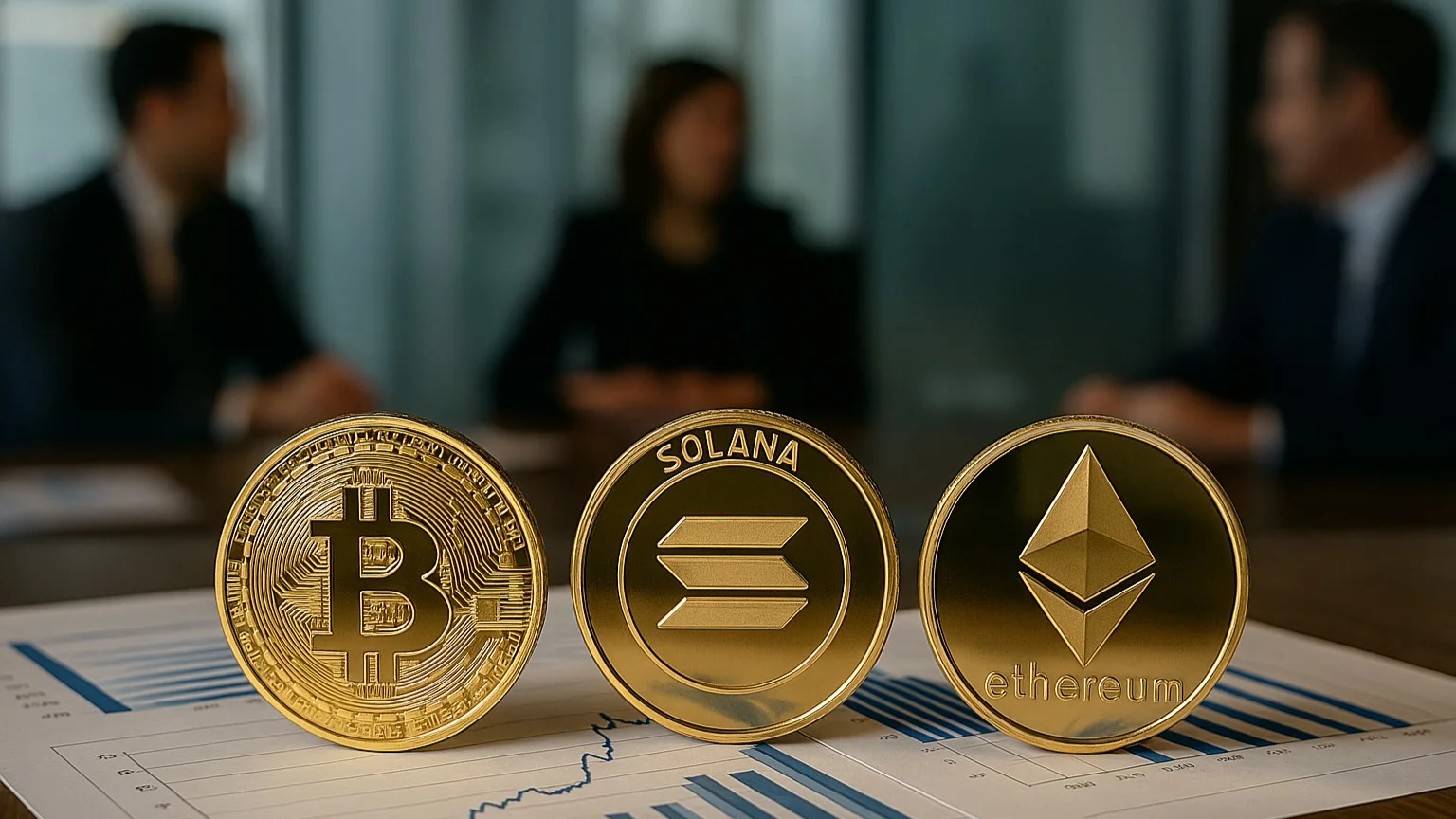
ZRO Comments and Price Analysis July 8, 2025
LayerZero (ZRO) Technical AnalysisAfter the market structure breaking and the following downtrend breakout, LayerZero gave a strong upward signal in the short term, yet this momentum failed to maintain the price which recently rose to $2.05 with the bounce starting around $1.60. This price increase caused the descending channel breakout. However, the sell pressure around this zone made the price test the falling channel upper boundary twice again. Falling Channel Structure The price of the coin is currently trading around $1.79 and still holding above the broken descending trend. This resistance is now working as support. The price is also very close to the nearest resistance level at $1.84 – the channel resistance level. This price level is very important as it is both technical resistance and the breaking point of the recent downtrend. Resistance levels like $2.05 and then $2.14 should be followed if the price can break above $1.84 and hold it in the short term. On the other hand, we can say that the price might retreat to the zone between $1.60–$1.50 in case it returns to the descending channel and the support level $1.76 gets broken downwards.These analyses, not offering any kind of investment advice, focus on support and resistance levels considered to offer trading opportunities in the short and medium term according to the market conditions. However, the user is responsible for their own actions and risk management. Moreover, it is highly recommended to use stop loss (SL) during the transactions.

BERA Comments and Price Analysis July 8, 2025
BERA/USDT Pair Technical Analysis Falling Wedge Formation Looking at the chart on 4H timeframe, we see that there is a falling wedge pattern and this pattern has been narrowing. The price of the coin has been consolidating within this formation and now ready for a breakout. The price has tested the upper boundary of the wedge and rejected from this area. The price holding above $1.58 is a good thing and we have the lower trend support below this level. Such formations usually target upward breakouts and we see that a breakout is on the way and nearing. BERA will move up to the resistance area between $1.80–$1.91 in the short term in case of a possible breakout. Following this zone, the price can climb up to $2.71–$2.89 in the middle term.In summary:There is a falling wedge formationThis formation technically targets upward breakoutThe price has consolidated and recently tested upper boundary many timesSupport level is $1.58 and nearest resistance level is $1.80These analyses, not offering any kind of investment advice, focus on support and resistance levels considered to offer trading opportunities in the short and medium term according to the market conditions. However, the user is responsible for their own actions and risk management. Moreover, it is highly recommended to use stop loss (SL) during the transactions.
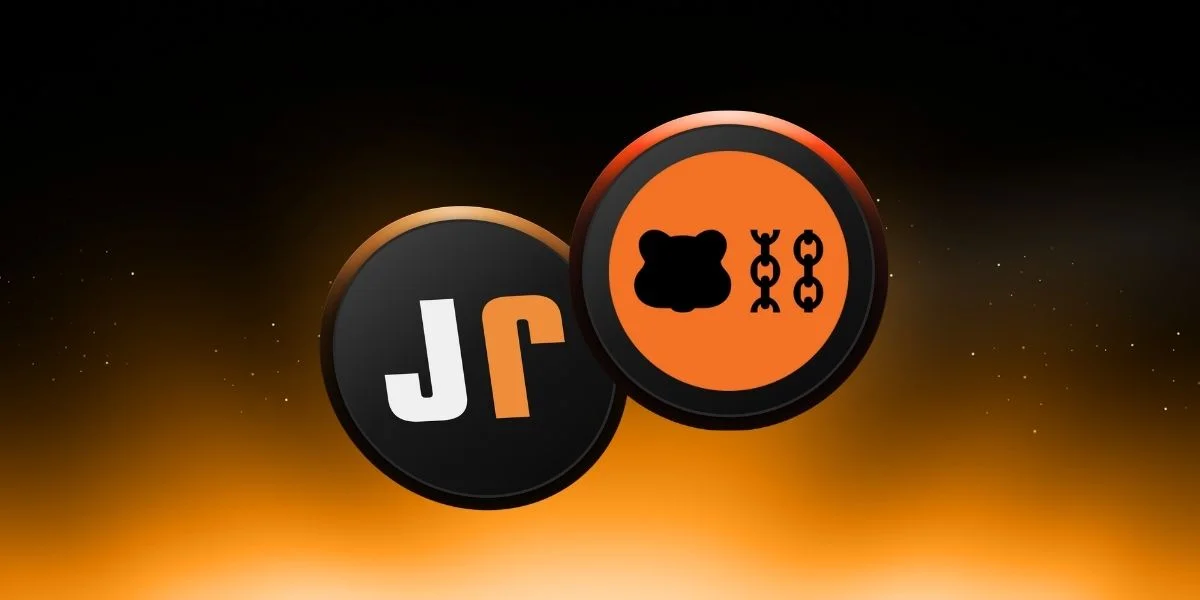
ARB Comments and Price Analysis July 8, 2025
ARB Technical AnalysisAs clearly seen on the daily chart, ARB coin is about to complete the double-bottom formation after a long-term descending trend. Investors of the coin could benefit from a strong rally in the second half of 2025 if the price can complete this formation totally. If the neckline above the level of $0.3523 gets broken upwards, the price may technically climb up to the zone between $0.87–$1.00. Double Dip Formation Moreover, we can see that the falling trend has come to an end, which might support the trend reversal. However, it is too early to enter right now as the formation is not complete yet and act accordingly. Investors and traders should be alert about retests at the resistance levels.Investors should be following price closings above the level of $0.3523. If broken, a different summer awaits ARB investors.These analyses, not offering any kind of investment advice, focus on support and resistance levels considered to offer trading opportunities in the short and medium term according to the market conditions. However, the user is responsible for their own actions and risk management. Moreover, it is highly recommended to use stop loss (SL) during the transactions.
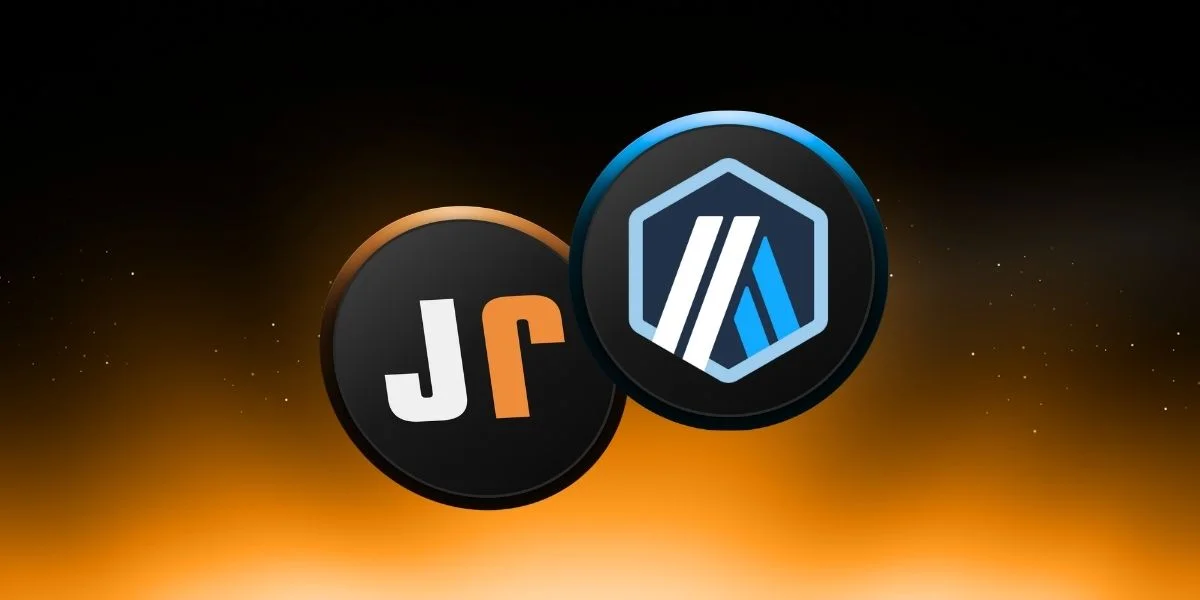
What is FARTCOIN (FARTCOIN)?
Fartcoin, as its name suggests, is a cryptocurrency built entirely on humor and irony. Born from internet jokes and collective absurdity, this meme coin emerged in response to serious projects in the blockchain world. Fartcoin, which seemed "joking" at first glance, quickly gained attention among niche internet communities and began to form a community around its name. So, what is Fartcoin? Why did it become so popular? Let's take a look at the details of this fun and unusual project together.Definition and Origins of FartcoinFartcoin is a community-based meme coin project developed entirely based on humor in the blockchain world. Its main goal is to create a viral effect by combining entertainment and internet culture with cryptocurrency. It was started by an anonymous group of developers who set out with the motto "If Dogecoin can be, why not a coin themed on farting?" Fartcoin's name itself aims to arouse curiosity and make people laugh: In fact, it was born as a satirical response to the "everything can be a coin" craze in the crypto market. Fartcoin was originally launched on the Solana blockchain in October 2024 with the SPL (Solana Program Library) standard. In other words, it was a project that preferred to use Solana's fast and low-cost infrastructure directly instead of Ethereum or Binance Smart Chain. Over time, copies or bridged versions of Fartcoin were seen on networks such as Ethereum (ERC-20) and Binance Smart Chain (BEP-20). These alternative versions made it easier to reach more users and take part in different blockchain ecosystems. Nevertheless, the original and main version of the project is on the Solana network. Fartcoin emerged in 2024 as a cryptocurrency project based on internet culture and humor. In fact, it is directly known as the "Fartcoin humor project". Inspired by an artificial intelligence experiment called "Terminal of Truth", the project was implemented on the Solana network. Initially thought of as just a "joke coin"; a fun approach was adopted that referred to the internet's meme culture without claiming financial seriousness. However, as in the case of Dogecoin, this humorous stance quickly attracted attention. Communities formed on platforms such as Discord, X (former Twitter) and Reddit; They established an ecosystem around Fartcoin with the memes, jokes and sarcastic content they shared every day about the crypto market. The fact that the project is not affiliated with any company or central authority and progresses with a completely community-focused structure was among the factors that increased this interest. Truth Terminal's plans for Fartcoin. Source: Infinitebackrooms Fartcoin's origin story is not based solely on anonymous developers. According to popular narrative, the project is based on an AI-powered chatbot experiment called "Truth Terminal". In this experiment, which was launched by developer Andy Ayrey in 2024, one of the bots tried to produce a "joke suitable for the crypto world" and eventually the idea of "Fartcoin" was born. In a way, Fartcoin emerged as a meme idea created by AI. Of course, how much of this story is real and how much is myth is debatable, but when we look at the general atmosphere of the project, it doesn't sound far-fetched at all.As a result, Fartcoin became a humor-focused cryptocurrency project, the foundations of which were laid in 2024 and quickly established a unique community on social media.Fartcoin's History: Important MilestonesThere are various important milestones in Fartcoin's short but colorful history. In the process from the beginning of the project to the present day, remarkable events have occurred thanks to both general developments in the crypto market and the efforts of the Fartcoin community. Here are some important milestones in Fartcoin’s history:2024 (October)-Launch and first DEX transactions: Fartcoin was launched on the Solana blockchain in October 2024. The first tokens were launched with a fair distribution model (without any pre-sale or private investment). Initially listed on decentralized exchanges (DEX) such as Raydium and Orca, Fartcoin began to conduct its first transactions among community members. Although its market value and liquidity were very small during this period, the project began to be talked about as a humorous element among crypto enthusiasts.Late 2024-Awareness increased with viral content on social media: Especially towards the end of 2024, the Fartcoin community increased awareness of the project with entertaining posts on various platforms, especially Twitter (X) and Reddit. Memes, jokes and “gas” themed content about Fartcoin began to be shared by thousands of people. Humorous slogans like “Hot Air Rises” emerged among community members, and a small movement formed around this slogan. Thanks to viral content, Fartcoin became a well-known token in the crypto market, even if it did not have a serious use case. Especially at the end of 2024, with its sudden price increases, celebrations with the hashtag “hot air rises” went viral on Twitter, and this situation was even discussed on mainstream financial news sites. Early 2025 - Announcement of NFT collections and staking options: In the first half of 2025, the development team (still maintaining their anonymous identities) announced plans to add some experimental features to the Fartcoin ecosystem. These plans for the future of Fartcoin included the launch of a collection where Fartcoin owners could mint NFTs, the establishment of a staking platform where they could lock their tokens and earn passive income, and the transition to a DAO (Decentralized Autonomous Organization) structure to advance the management of the project on a decentralized basis. Later in the year, Fartcoin established cross-chain bridges to the Binance Smart Chain network in addition to Ethereum and began trading on different platforms such as PancakeSwap.January 22, 2025-FARTCOIN price peak: In January 2025, Fartcoin's price reached $ 2.73, reaching the peak in the project's history, and its market value reached almost $ 1 billion. With this value, Fartcoin became the second largest meme coin on the Solana network (Bonk was the first), gaining an important place in its field. However, sharp corrections were not long in coming, as was the rapid increase in price. At the end of January 2025, there were decreases exceeding 15 percent in the FARTCOIN price due to the heavy sales of large investors (whales).Mid-2025-DAO model and new projects: In the third quarter of 2025, the Fartcoin project switched to a DAO model in order to transfer the management style to the community. Now, important project decisions were being made through decentralized governance mechanisms where token holders could vote. This transition made Fartcoin truly “participant-oriented.” Towards the end of the year, Fartcoin began to be listed on major cryptocurrency exchanges such as Binance, Gate.io, Bitget, and KuCoin. The most recent listing, which stands out as a centralized exchange, came from Binance.US. Especially with its success on the Solana network, Fartcoin, which is known as a viral crypto project, exceeded the $ 0.50 level in December 2024 and reached an all-time high, and even in traditional financial media, news appeared asking "How did such a ridiculously named coin reach this level?" The Fartcoin community started talking about new plans such as a play-to-earn concept game called "Fart Wars" and metaverse integration. It is worth noting that these plans have not yet become reality.Why is Fartcoin Valuable?A memecoin being considered "valuable" is usually based on different dynamics than classic projects. The main points that make Fartcoin special and attract the attention of investors can be listed as follows:Creating a community through humorPerhaps the greatest value of Fartcoin is that it builds a strong community around itself using humorous content. People join Fartcoin not only for profit, but also to be part of the fun. The project, which turned a very simple fact like “Everyone farts” into a common denominator, was able to bring thousands of people together around the same joke. It has become a norm for community members to make Fartcoin jokes to relieve the stress of the day. This has created a warm and humane environment against the cold financial language of crypto. As a result, with the power of being a community-based coin, Fartcoin has managed to capture a more loyal audience than many other serious projects.Offering a fun and experimental area to investorsFor some investors, memecoins like Fartcoin offer a fun and experimental investment area, albeit with high risk. Perhaps the most sincere answer to the question “What is Fartcoin for?” is: investing in fun. Of course, Fartcoin offers some technical innovations, but many people are also participating in a humorous piece of internet history while buying this token. In short, unlike serious cryptocurrencies, projects like Fartcoin provide investors with a kind of “playground” and motivate them to buy out of curiosity or just for fun.NFT, staking and donation systems, a small but active area of useAlthough Fartcoin's main purpose is to make jokes by nature, the project has developed some areas of use over time. For example, the FartNFT collection, which was launched in 2025, includes unique digital assets themed around Fartcoin. This collection features gas sound clips, humorous visuals and various meme artworks as NFTs. Fartcoin owners can mint these NFTs or buy and sell them on the secondary market. The staking feature has been introduced on various exchanges. Users can lock their tokens according to certain conditions of the exchanges and earn returns, i.e. staking rewards, in return. Fart NFTs These innovations, which are rare among humorous coin projects, have added a small functionality to Fartcoin. In addition, the Fartcoin community has been bringing up philanthropy and environmental initiatives in a humorous manner since the beginning. For example, creative donation ideas such as pledging to plant trees in real life for every 1,000 FART tokens minted or funding renewable energy projects by burning tokens have been put forward. Although these have not been fully realized, the fact that the project has been able to turn the theme of “gas extraction” into environmental awareness jokes shows the creativity of the community.Social media support and volatile market performanceFartcoin’s market value is largely fueled by social media interest. The price explosions experienced in late 2024 and early 2025 were actually due to viral campaigns launched by the community on Twitter (X). For example, when the price broke a record, users on the X platform shared hundreds of posts with the slogan “Hot Air Rises” and these contents reached thousands of people. With this momentum brought by social media, Fartcoin reached a market value of almost $ 1 billion at one point, leaving many traditional companies and even old meme cryptocurrencies like Dogecoin behind. However, it should be emphasized that declines can occur as quickly as these increases. Fartcoin, in the category of what we can call social media tokens, has a very volatile price chart, completely dependent on community sentiment and internet trends. A small rumor or a single influencer's tweet can move the price by 20-30% in a day. For this reason, Fartcoin should be seen as a high-risk trading opportunity or a "fun gamble" rather than a serious investment tool. Nevertheless, despite its volatile structure, it continues to attract a certain market interest by maintaining its price around $ 1 as of 2025 thanks to the vibrant community behind it. Differences with similar meme coin projectsTo better understand Fartcoin, it may be useful to compare it with other famous meme coin projects:Dogecoin (DOGE): Born as an internet joke in 2013, Dogecoin has gained incredible community support and popularity over time. With its long history, Dogecoin is almost the ancestor of meme coins. Although its technical benefits are limited, it has reached a huge market value with the support of celebrities such as Elon Musk. Fartcoin, on the other hand, is a new representative of the generation that Dogecoin inspired; It is based on “jokes” like Doge, but it emerged much later and adopted a more niche sense of humor. Although Dogecoin is still ahead in terms of community loyalty, Fartcoin also managed to create its own audience in a short time.Shiba Inu (SHIB): Shiba Inu, which emerged in 2020, is a meme coin that started as an ERC-20 token on Ethereum. It set out to compete with Dogecoin and used the slogan “Dogecoin killer”. Over time, it has built a comprehensive ecosystem with a decentralized exchange called ShibaSwap, NFT collections, and even metaverse projects. SHIB has surpassed the classic memecoin mold with its huge supply (trillions of tokens) and DeFi features. Fartcoin, on the other hand, does not have as large an ecosystem as SHIB; however, it is compatible with Ethereum like it and spreads to BSC and Solana via cross-chain bridges. Just as Shiba Inu caught a large audience with its dog theme, Fartcoin appeals to a smaller but loyal audience with its gas theme. Although both projects are community-oriented, Shiba Inu’s areas of use are broader, while Fartcoin’s are more limited to humor and community entertainment. Pepe (PEPE): Launched in 2023, Pepe is an ERC-20 token based on the famous internet frog meme. Despite offering no roadmap or tangible benefits, it reached a billion-dollar market value in a few months thanks entirely to viral meme culture. Pepe was perhaps one of the most extreme examples of “having no purpose”, the community adopted this coin entirely for short-term speculation and joke purposes. If we compare it to Fartcoin, both are based on absurd humor. Just as Pepe rose with an anonymous team with the image of a “frog”, Fartcoin has an anonymous team with the image of a “gas”. However, both coins derive their main value from the power of the viral community, and their price performances are similarly dependent on hype cycles. Meme-themed cryptocurrencies experienced a major rise in the 2024-2025 period. Projects such as Dogecoin (the first coin that started as a joke), Pepe (frog meme) and Fartcoin (gas joke) reached billions of dollars in market values, surprising traditional finance circles. Fartcoin stood out during this period, especially with its Solana-based nature and the “AI meme coin” narrative.Who is the Founder of Fartcoin?There is no clear information about the founders of the Fartcoin project, except for Truth Terminal. No official whitepaper or founder's manifesto was published; instead, a community-driven development process was adopted. In other words, the most accurate answer to the question of "who founded Fartcoin" is that there is a group of developers behind the project who hide their real names and are probably well-versed in internet meme culture.Although the founding team is anonymous, the artificial intelligence experiment called Truth Terminal, which we mentioned in the story of Fartcoin's emergence, has an important place. The popular rumor is that on October 24, 2024, this AI chatbot was encouraged to create "a meme that would affect the crypto community" and the Fartcoin concept emerged. Although the human figure behind this Truth Terminal story is Andy Ayrey, he remained in the background during the development process of Fartcoin.There is no central authority or CEO in Fartcoin. It is not known who manages the X account or who shares the posts. To summarize, there is no clear “founder identity” behind Fartcoin. Those who founded and managed it are largely the community itself. There may be a few core names involved from the beginning, but even they try to keep the humorous personality of the project alive without putting themselves in the foreground. In this respect, Fartcoin stands out as a project truly owned by the community among social media tokens.Frequently Asked Questions (FAQ)Below, you can find frequently asked questions and answers about Fartcoin:What is Fartcoin, is it a serious investment?: Fartcoin is a community-focused memecoin based entirely on humor and internet jokes. Its purpose is to create entertainment and viral effects rather than serious technological innovation. Therefore, it should be considered a very high-risk asset; since its value is largely dependent on community interest and social media trends, it is recommended to approach it only with amounts you can afford to lose and for entertainment purposes.What network does Fartcoin operate on?: Fartcoin's main network is the Solana blockchain and was launched in October 2024 with Solana's fast and low-cost infrastructure. There are also bridged versions on networks such as Ethereum (ERC-20) and Binance Smart Chain (BEP-20). However, the most active and liquid markets are still on Solana.What is the token supply and distribution?: Fartcoin's maximum token supply is 1 billion, and almost all of them are in circulation as of 2025. The project has adopted a fair launch model and has not made pre-sale or large investor allocations. Approximately 40% of the supply is allocated to community development and rewards, 30% to initial liquidity, and the remaining part to marketing and team share.What are the NFT and staking features?: In terms of Fartcoin token features, the FartNFT collection, which was launched in 2025, consists of Fartcoin-themed digital works. Staking can be done through centralized or decentralized exchanges that provide this for Fartcoin.Who are the founders of Fartcoin?: The founders of Fartcoin preferred to remain anonymous and there is no specific founding team that has been publicly announced. In the story of the emergence of the project, it is humorously told that in October 2024, an artificial intelligence chatbot, "Truth Terminal", was the brainchild.Where to buy?: Fartcoin is traded on both decentralized exchanges (DEXs) and some centralized cryptocurrency exchanges. It can be found on Solana-based DEXs (Raydium, Orca, Jupiter) and on Uniswap on Ethereum. It is also listed on major centralized exchanges such as Binance, Gate.io, Bitget, MEXC and KuCoin. It is usually traded on USDT or SOL pairs.Continue to discover community-focused and creative memecoin projects like Fartcoin with the JR Kripto guides.

Trump's Company Files with SEC for ETF Covering Bitcoin and 4 Altcoins
Trump Media & Technology Group’s social media platform Truth Social has taken another big step into the cryptocurrency market. The company has filed a formal application with the U.S. Securities and Exchange Commission (SEC) for a new exchange-traded fund (ETF) called the “Crypto Blue Chip ETF.” The ETF is planned to consist of five major crypto assets: Bitcoin (BTC), Ethereum (ETH), Solana (SOL), Cronos (CRO), and Ripple (XRP). Truth Social has filed an ETF applicationAccording to the preliminary prospectus submitted by Truth Social, the fund’s asset allocation will be as follows: 70% BTC, 15% ETH, 8% SOL, 5% CRO, and 2% XRP. This allocation aims to offer significant exposure not only to Bitcoin but also to other major altcoins, unlike traditional crypto investment funds. The fund’s digital asset custody operations will be handled by Foris DAX Trust Company, which is affiliated with Crypto.com.This application is not Truth Social's first move in the crypto ETF space. As you may recall, the company also applied for a spot ETF focused solely on Bitcoin in June. Then came a second application for a Bitcoin-Ethereum combined ETF that also included Ethereum. The sponsor of all these products is digital asset management firm Yorkville America Digital. The ETF shares are planned to be traded on the NYSE Arca exchange.Truth Social's ETF application reveals not only the company's strategic vision, but also the Trump administration's positive approach to crypto assets. In fact, the SEC is expected to have a crypto-friendly attitude compared to the previous Biden administration in the current period. For this reason, it is thought that Truth Social's applications may be concluded more quickly and positively.ETF applications for many altcoins await approvalIn addition, Truth Social's ETF initiative is not alone. Major asset managers such as Bitwise, Grayscale, Franklin Templeton and REX Shares have also filed applications with the SEC for ETF products based on various crypto assets such as XRP, Solana, Dogecoin, Cardano, Avalanche, Hedera, Litecoin and Polkadot. The crypto assets chosen by Truth Social are noteworthy. The inclusion of Bitcoin and Ethereum as market leaders was an expected move. While Solana stands out with its speed and low transaction costs, Cronos stands out as part of Crypto.com's decentralized ecosystem. The inclusion of XRP is considered a very ambitious choice despite the long-standing litigation between the SEC and Ripple. In light of these developments, all eyes have turned to the SEC again. Whether Truth Social's "Crypto Blue Chip ETF" application will be accepted and how it will respond to other multi-asset ETF projects is eagerly awaited.
